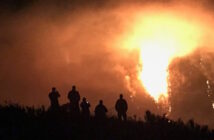The 2015 San Bernardino mass shooting left 14 dead and 22 wounded.
San Bernardino Police Department Lt. Mike Madden was the first member of law enforcement to respond on that Dec. 2 morning.
Since the shooting, some from his agency have publicly spoken about it so that maybe future incidents like that massacre can be prevented.
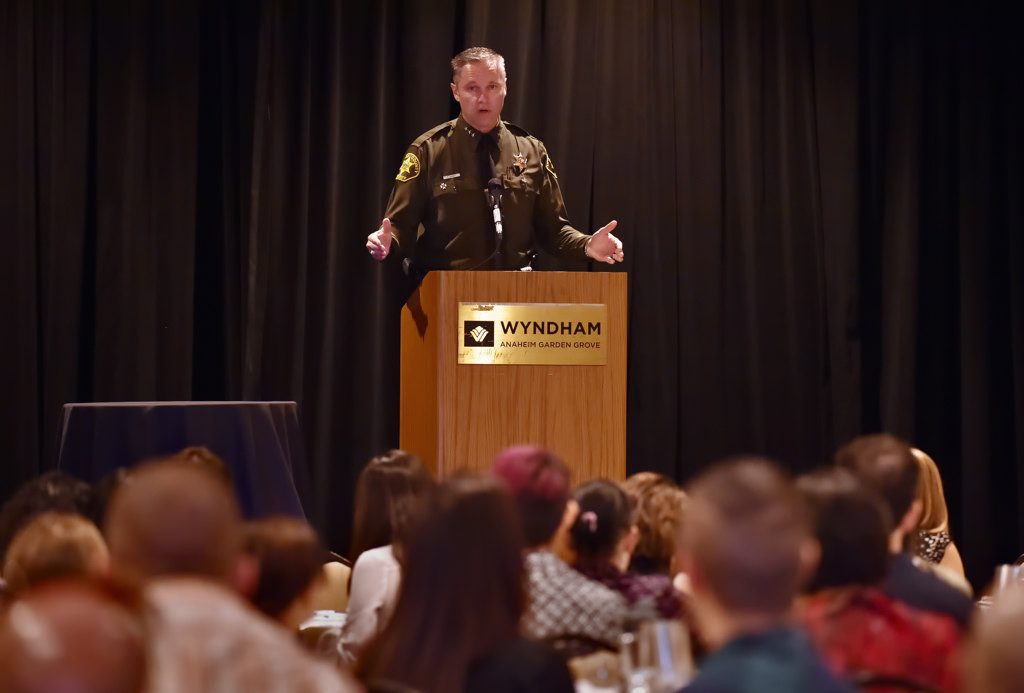
Orange County Undersheriff Don Barnes gives the opening speech during the 13th Annual Community First Conference for first responders and health-care providers at the Wyndham Hotel in Garden Grove. Photo by Steven Georges/Behind the Badge OC
“We need to learn about it…. We need to learn from it,” said Madden, speaking at the 13th annual Community First Conference at the Wyndham Anaheim Garden Grove on Oct. 25.
Hosted by College Hospitals and the Orange County Health Care Agency, the educational event aims to help members of law enforcement, mental health professionals, judicial officers, school professionals and others in related fields to obtain the latest research, protocols and other information about services available to those with mental illness. It offers a forum for the sharing of information and expertise.
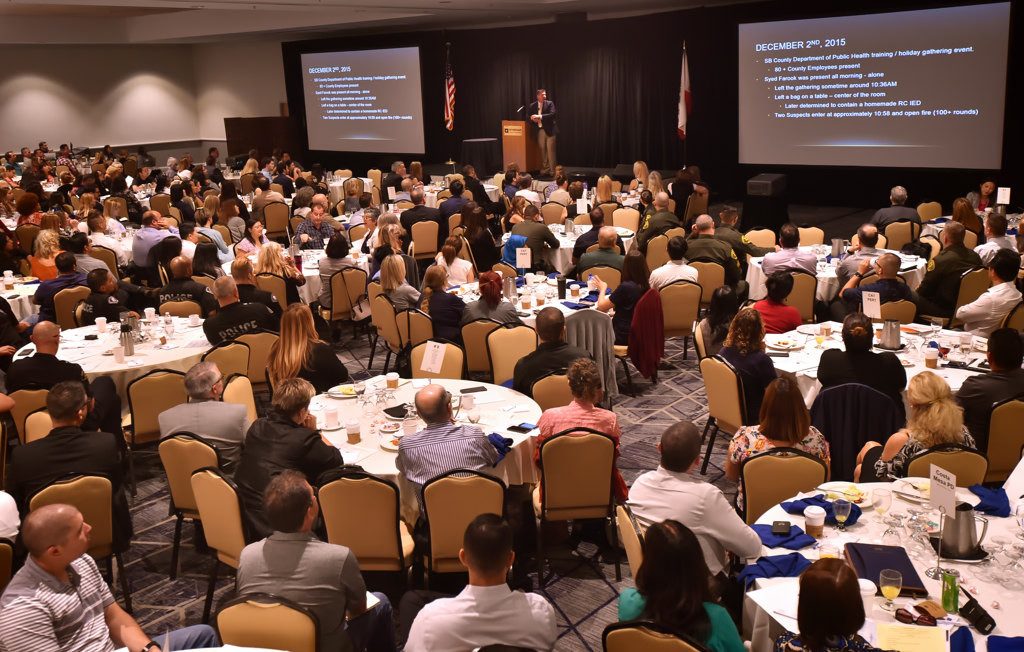
“When Terrorism Strikes in America: A First Responder’s Perspective” – Lt. Mike Madden of the San Bernardino Police Department gives a detailed account and analysis of the San Bernardino shooting during the Community First Conference. Photo by Steven Georges/Behind the Badge OC
“Networking is a big deal for this conference,” said Westminster Police Department Commander Michael Chapman, a member of the conference planning committee. “We always [include]a law enforcement and a mental health component. We always try to marry those topics.”
Topics for each year’s conference are selected based on relevance and timeliness. Previous years’ topics have included the Virginia Tech shooting and the shooting at Sandy Hook Elementary School, according to committee member Lt. Jared Dahl, who is with the Orange County Sheriff’s Department.
“Mental health and law enforcement is a big trend,” he said.
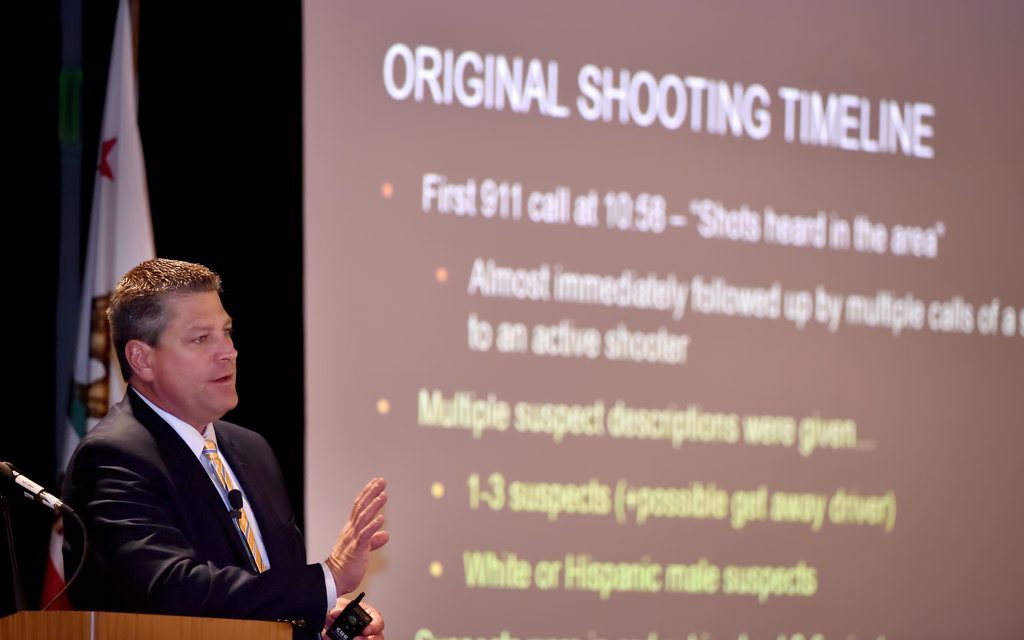
“When Terrorism Strikes in America: A First Responder’s Perspective” – Lt. Mike Madden of the San Bernardino Police Department gives a detailed account and analysis of the San Bernardino shooting during the Community First Conference. Photo by Steven Georges/Behind the Badge OC
Madden’s recounting of the shooting to the audience of about 600 members of law enforcement, mental health workers and school officials – which included audio from dispatch – provided a detailed look into an agency’s response to an unprecedented attack.
The ultimate goal? Keeping it from happening again.
“If it can occur in San Bernardino, California, it can occur anywhere,” he said. “So we need to be prepared.”
Following Madden’s talk was San Bernardino County Behavioral Health Director Veronica Kelley, who took the audience through the incident and its aftermath from a mental health perspective.
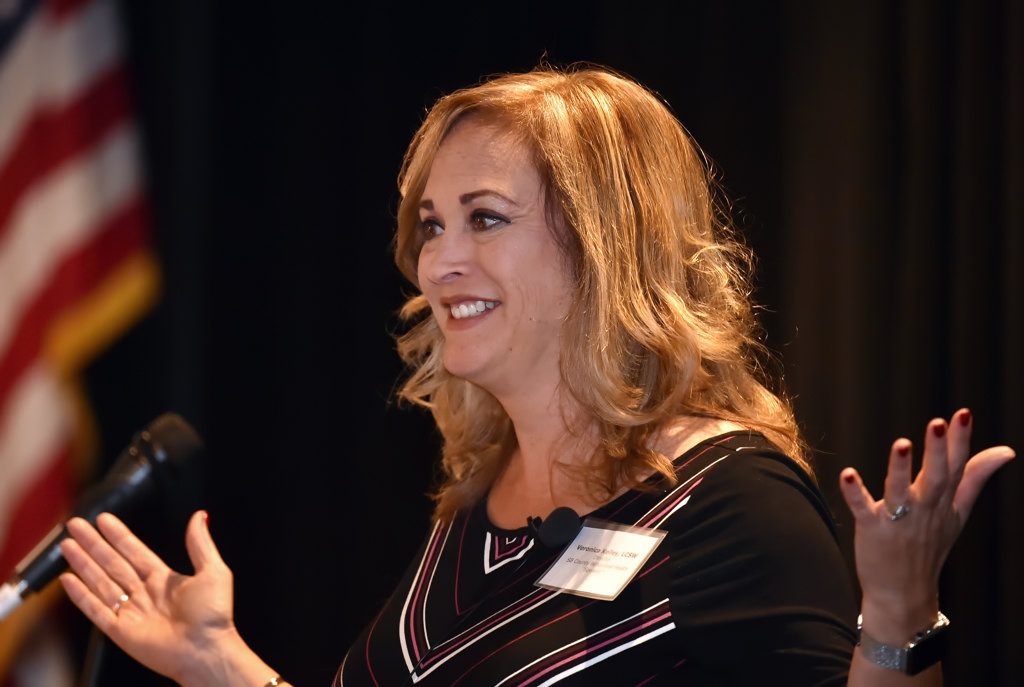
“Behavioral Health First Responders: Boots On The Ground” – Veronica Kelley, LCSW and director of San Bernardino County Behavioral Health, smiles during a lighter moment of her speech about first responders during the 13th Annual Community First Conference. Photo by Steven Georges/Behind the Badge OC
“This is different from all acts of terrorism because it was one of our own that did it,” Kelley said in reference to the fact that one of the shooters, Syed Rizwan Farook, had worked for San Bernardino County as a health inspector for five years. The shooting took place at a holiday work party.

Attendees of the 13th Annual Community First Conference listen to Veronica Kelley, LCSW and director of San Bernardino County Behavioral Health. Photo by Steven Georges/Behind the Badge OC
Law enforcement and mental health form parts of a whole when it comes to incidents like these. Officers deal with the crime and mental health workers are there to help in the aftermath, she said.
“I will tell you, our relationship with law enforcement is essential,” she said.
Alberto Martinez, deputy director of the Orange County Intelligence Assessment Center (OCIAC), a threat assessment system developed after the 9/11 terrorist attacks, described how local suspicious activity reports are directed to OCIAC for analysis and vetting – not always a simple task. Mental health disorders can play a role in the suspicious activity, whether criminal or not, he said.
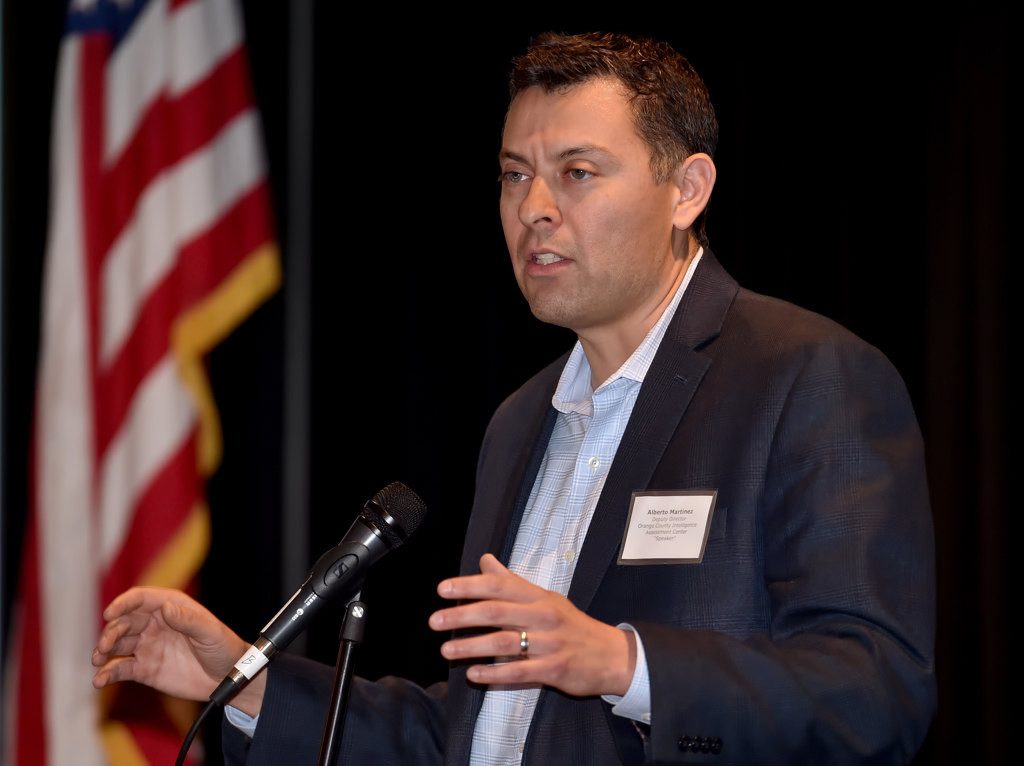
“Law Enforcement and Public Safety Partnerships” – Alberto Martinez, deputy director of the Orange County Intelligence Assessment Center (OCIAC), makes his presentation during the 13th Annual Community First Conference. Photo by Steven Georges/Behind the Badge OC
Investigator Chris McDonald, a member of the OCSD and FBI CT-6 counterterrorism squad, and Paul Russell, medical liaison officer for OCIAC, talked about analyzing terrorist threats when confronted with a potential for mental illness – a topic forming the essence of the conference’s basic mission.
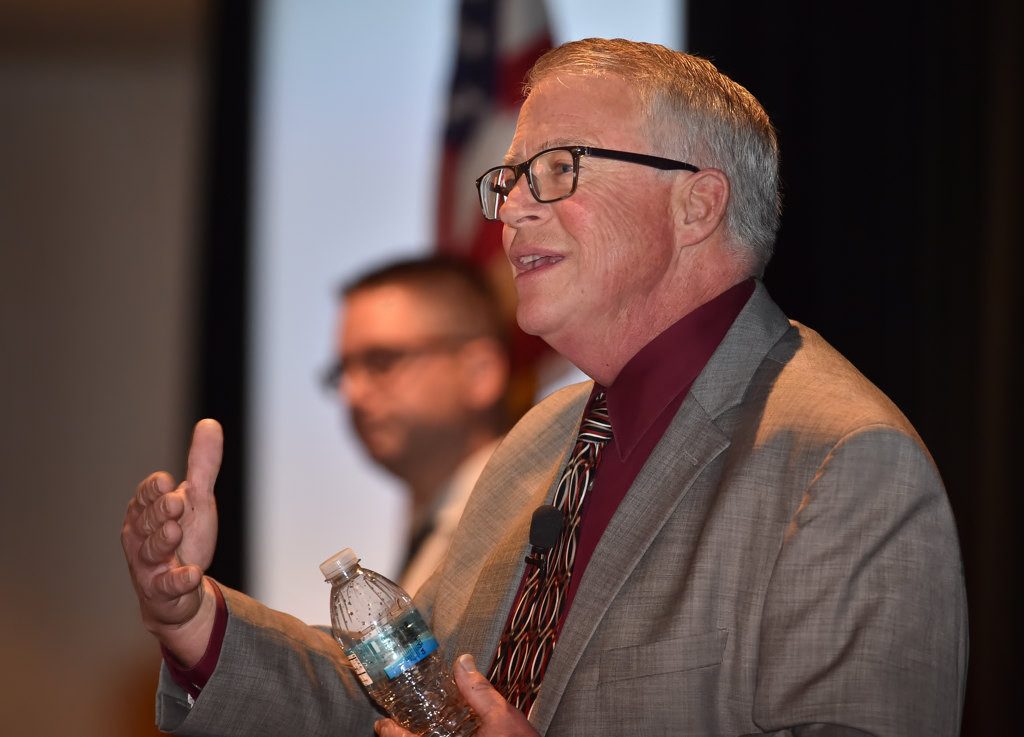
Investigator Chris McDonald, a member of the OCSD and FBI CT-6 counterterrorism squad, talks about analyzing terrorist threats when confronted with a potential for mental illness. Behind him is Paul Russell. Photo by Steven Georges/Behind the Badge OC
“It’s a conference meant to bring mental health, school officials and law enforcement together,” Anaheim PD Lt. Craig Friesen, who was the event MC, told Behind the Badge. “Now I think everybody realizes the best approach is a collaborative one.”
Added Gail Jones, senior Community Services & Law Enforcement liaison and conference coordinator for College Hospitals: “There’s a lot of camaraderie, a lot of networking and a lot of education happening at our annual conferences.”

Anaheim PD Lt. Craig Friesen moderates the 13th Annual Community First Conference. Photo by Steven Georges/Behind the Badge OC
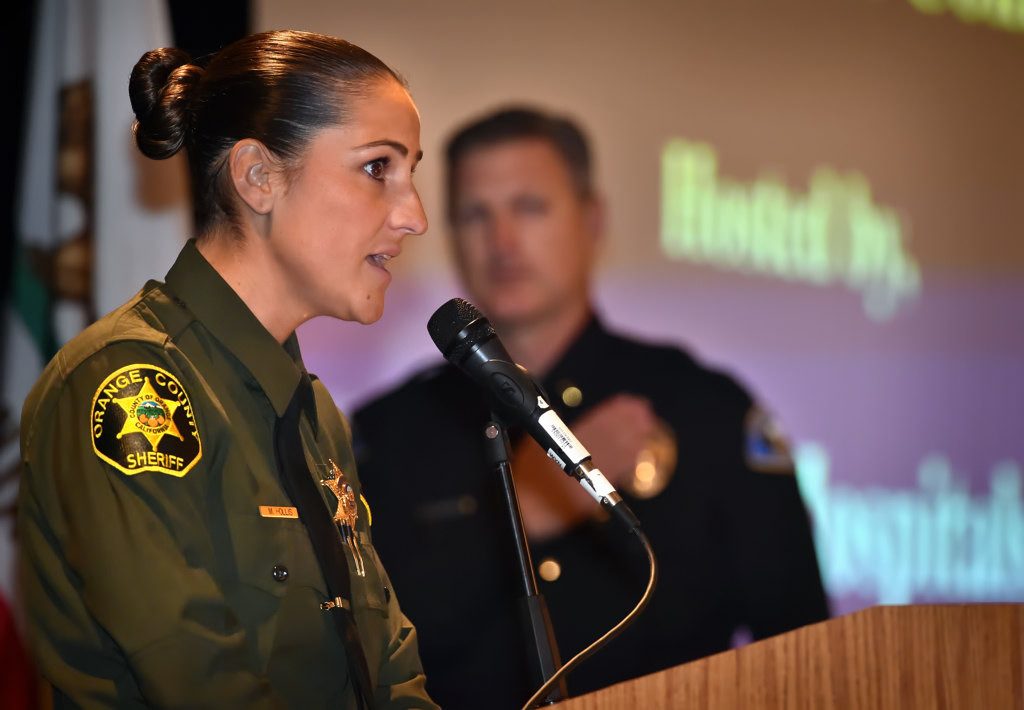
OCSD Deputy Mary Hollis sings the National Anthem at the start of the 13th Annual Community First Conference. Photo by Steven Georges/Behind the Badge OC
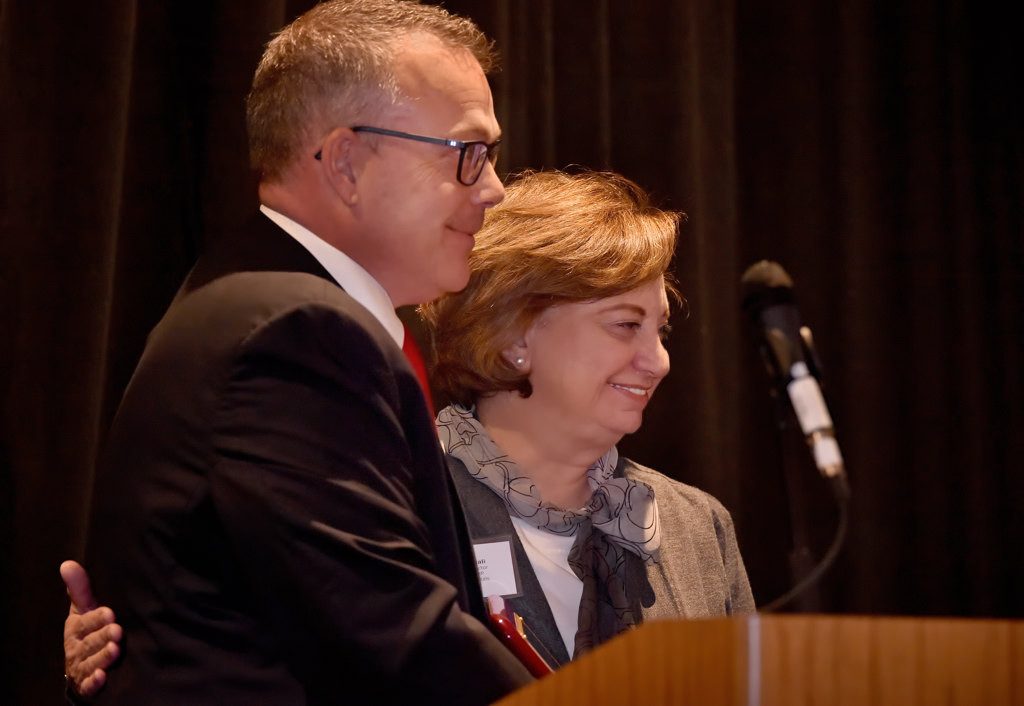
Nahla Kayla (right), executive director of Access California Services and program director for Anaheim PHP College Hospital, receives recognition, and a plaque, from Mark Lawrenz, conference planning committee and division manager for the O.C. Health Care Agency, during the 13th Annual Community First Conference. Photo by Steven Georges/Behind the Badge OC
 Behind the Badge
Behind the Badge



